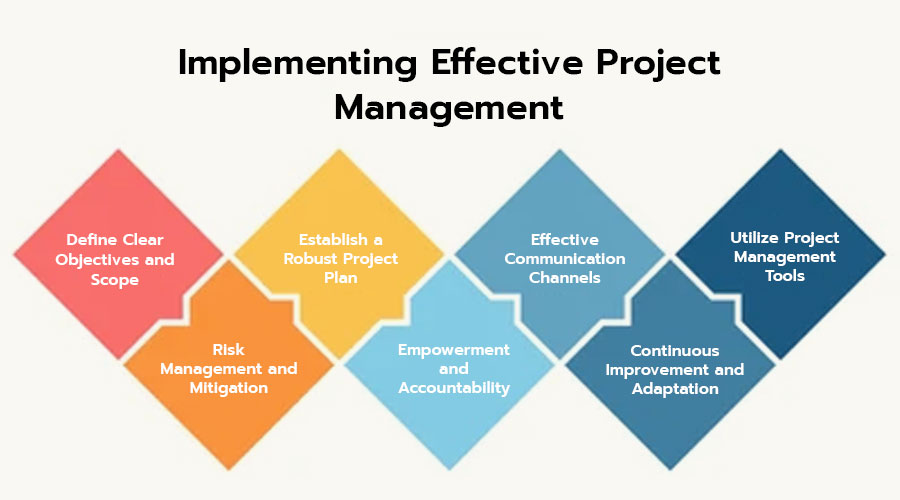Table of Contents
Defining Your Vision and Mission
In the dynamic landscape of business, having a well-defined vision and mission is paramount to success. These statements serve as guiding stars, shaping the direction, purpose, and values of an organization. Whether you’re a startup, a non-profit, or an established corporation, clarifying your vision and mission can set you on the path towards achieving your goals and making a meaningful impact.
Understanding Vision and Mission:
Before delving into the process of crafting these statements, it’s crucial to understand their distinct roles.
- Vision Statement: This encapsulates the future aspirations of your organization. It paints a vivid picture of what you aim to achieve in the long term. A compelling vision statement inspires and motivates stakeholders, aligning them towards a common goal.
- Mission Statement: Your mission statement defines the fundamental purpose of your existence. It outlines who you are, what you do, and whom you serve. A well-crafted mission statement communicates your core values and objectives, guiding day-to-day operations and strategic decisions.
The Importance of Clarity:
Clarity is key when defining your vision and mission. These statements should be concise, yet comprehensive, conveying your purpose in a clear and compelling manner. Ambiguity can lead to confusion among stakeholders and hinder progress towards your goals.
Steps to Define Your Vision and Mission:
- Reflect on Your Values: Begin by reflecting on the core values that drive your organization. What principles do you hold dear? What do you aspire to stand for? Your values serve as the foundation upon which your vision and mission are built.
- Envision the Future: Imagine where you see your organization in the years to come. What impact do you hope to make? How do you envision success? Let your imagination run wild as you craft a compelling vision for the future.
- Define Your Purpose: Clarify the purpose of your organization. Why does it exist? Whom does it aim to serve? Your mission statement should succinctly capture the essence of your purpose, leaving no room for ambiguity.
- Seek Input: Involve key stakeholders, including employees, customers, and partners, in the process of defining your vision and mission. Their insights can provide valuable perspective and ensure buy-in across the organization.
- Craft Concise Statements: Once you’ve gathered input and reflected on your values and aspirations, distill your thoughts into clear and concise statements. Your vision and mission should be memorable and easily understood by all.
Examples of Inspiring Vision and Mission Statements:
- Tesla: Vision – “To accelerate the world’s transition to sustainable energy.” Mission – “To create the most compelling car company of the 21st century by driving the world’s transition to electric vehicles.”
- Google: Vision – “To provide access to the world’s information in one click.” Mission – “To organize the world’s information and make it universally accessible and useful.”
Developing a Business Plan
In the dynamic landscape of entrepreneurship, a well-crafted business plan serves as the cornerstone of success. Whether you’re a seasoned entrepreneur or a budding startup, developing a comprehensive business plan is essential for charting a clear path towards your goals, securing funding, and navigating potential challenges along the way. In this guide, we’ll delve into the intricacies of creating a business plan that not only outlines your vision but also resonates with investors and stakeholders.
- Executive Summary: The executive summary encapsulates the essence of your business plan, providing a snapshot of your company’s mission, goals, target market, competitive advantage, and financial projections. This section is crucial as it sets the tone for the rest of the document and should be compelling enough to grab the reader’s attention.
- Company Description: Here, you’ll provide a detailed overview of your business, including its history, legal structure, location, and the products or services you offer. Additionally, outline your unique selling proposition (USP) and how your business fills a gap in the market.
- Market Analysis: Conduct thorough research to understand your industry, target market, and competitors. Identify market trends, customer demographics, and potential opportunities for growth. Analyze your competitors’ strengths and weaknesses to position your business effectively.
- Organization and Management: Detail the organizational structure of your company, including key personnel and their roles. Highlight the expertise and experience of your management team, demonstrating their ability to execute the business plan successfully.
- Products and Services: Describe your offerings in detail, emphasizing their features, benefits, and value proposition to customers. Explain how your products or services address the needs and preferences of your target market, setting you apart from competitors.
- Marketing and Sales Strategy: Outline your marketing and sales tactics for reaching and acquiring customers. This includes your branding strategy, pricing model, distribution channels, and promotional activities. Incorporate market research and data-driven insights to support your strategies.
- Financial Projections: Present realistic financial forecasts, including income statements, cash flow projections, and balance sheets. Utilize historical data, industry benchmarks, and growth assumptions to support your projections. Investors will scrutinize this section to assess the viability and scalability of your business.
- Funding Request: If you’re seeking funding, clearly state the amount you need, how it will be used, and the potential returns for investors. Provide details on the terms of investment, including equity stake, interest rates, and repayment schedules.
- Appendix: Include any additional documents or information that support your business plan, such as resumes of key team members, market research data, and legal documents.
Choosing the Right Legal Structure
In the realm of entrepreneurship, one of the crucial decisions that can significantly impact the future of your business is choosing the right legal structure. This choice not only affects how your business operates but also its taxation, liability, and regulatory obligations. Whether you’re a sole proprietor, partnership, limited liability company (LLC), or corporation, each legal structure comes with its own set of advantages and disadvantages. In this guide, we’ll delve into the key factors to consider when selecting the most suitable legal structure for your venture.
Understanding Your Options:
Before diving into the specifics, let’s explore the common legal structures available for businesses:
- Sole Proprietorship: This is the simplest form of business ownership where an individual runs the business alone and is personally responsible for its debts.
- Partnership: In a partnership, two or more individuals share ownership of the business. They also share profits, losses, and responsibilities.
- Limited Liability Company (LLC): An LLC offers a blend of partnership and corporate structures, providing limited liability protection to its owners (members) while allowing flexibility in management and taxation.
- Corporation: A corporation is a separate legal entity from its owners (shareholders), offering limited liability protection and potential tax advantages. It can be structured as either a C corporation or an S corporation, each with its own tax implications.
Factors to Consider:
Now, let’s delve into the factors to consider when choosing the right legal structure for your business:
- Liability Protection: Protecting your personal assets from business debts and lawsuits is paramount. If liability protection is a top priority, forming an LLC or corporation may be the best option.
- Tax Implications: Different legal structures have varying tax implications. For example, sole proprietors and partnerships report business income on their personal tax returns, while corporations are subject to corporate taxes. Consulting with a tax advisor can help you understand the tax implications of each structure and choose the most tax-efficient option for your business.
- Management and Control: Consider how you want your business to be managed. Sole proprietors have full control over decision-making, while partnerships require consensus among partners. In contrast, corporations have a more formal management structure with a board of directors and officers.
- Scalability and Growth: If you envision rapid growth and potential outside investment, a corporate structure may be more suitable. Corporations have the ability to issue stock and attract investors, facilitating expansion opportunities.
- Regulatory Compliance: Each legal structure has its own regulatory requirements and compliance obligations. Corporations, for instance, are subject to more stringent reporting and record-keeping requirements than sole proprietorships or partnerships.
- Cost and Complexity: Consider the costs associated with forming and maintaining each legal structure, including registration fees, ongoing administrative expenses, and legal fees. Sole proprietorships and partnerships typically have lower startup costs and less administrative overhead compared to LLCs and corporations.
Seeking Professional Advice:
Choosing the right legal structure for your business is a significant decision that warrants careful consideration. While this guide provides an overview of the key factors to consider, it’s essential to seek professional advice from a qualified attorney and accountant. They can provide personalized guidance based on your specific circumstances, ensuring that you make an informed decision that aligns with your business goals and objectives.
Registering Your Company
In the dynamic landscape of entrepreneurship, registering your company marks a crucial milestone on the path to success. Whether you’re launching a startup, a small business, or a larger enterprise, the process of registration is a fundamental step that sets the legal framework for your operations. In this guide, we’ll delve into the essentials of company registration, outlining the steps involved and highlighting key considerations along the way.
Understanding Company Registration:
Company registration is the formal process of legally establishing your business entity. It confers legal recognition, protection, and certain rights to your enterprise. The specific requirements and procedures for registration may vary depending on the jurisdiction and the type of business structure you choose. Common business structures include sole proprietorships, partnerships, limited liability companies (LLCs), and corporations.
Benefits of Company Registration:
- Legal Protection: Registering your company separates your personal assets from your business liabilities, providing a layer of legal protection. In the event of lawsuits or debts, your personal assets typically remain shielded.
- Credibility and Trust: A registered company often instills confidence and trust among customers, suppliers, and partners. It portrays professionalism and commitment to compliance with legal regulations.
- Access to Funding: Registered companies may have access to a broader range of funding options, including loans, investments, and grants. Investors and financial institutions generally prefer dealing with registered entities due to their transparency and accountability.
- Tax Benefits: Depending on your jurisdiction, registered companies may be eligible for various tax benefits, deductions, and incentives, reducing the overall tax burden.
Steps to Register Your Company:
- Choose a Business Structure: Select the most suitable business structure based on factors such as liability, taxation, ownership, and operational flexibility. Consult with legal and financial advisors to determine the optimal structure for your venture.
- Select a Business Name: Choose a unique and memorable name for your company, ensuring it complies with the naming regulations of your jurisdiction. Conduct a thorough search to confirm the availability of the chosen name and avoid potential conflicts with existing trademarks.
- Prepare Necessary Documents: Gather all required documents for company registration, which may include identification proof, address proof, memorandum of association, articles of association, and any specific forms mandated by the regulatory authorities.
- Register with Government Authorities: Submit the completed registration forms along with the requisite documents to the relevant government authorities or regulatory bodies responsible for company registration. Pay the applicable registration fees as per the prescribed guidelines.
- Obtain Licenses and Permits: Depending on the nature of your business activities, you may need to obtain additional licenses, permits, or approvals from regulatory agencies or local authorities. Ensure compliance with all regulatory requirements to avoid potential penalties or operational disruptions.
- Register for Taxation: Register your company for taxation purposes with the appropriate tax authorities. Obtain a tax identification number (TIN) or any other tax-related registrations as required by law. Comply with ongoing tax obligations, including filing tax returns and remitting taxes on time.
- Set Up Corporate Governance: Establish internal policies, procedures, and governance structures to ensure compliance with legal and regulatory obligations. Define roles and responsibilities, maintain proper records, and implement mechanisms for transparency and accountability within your organization.
Securing Funding and Investment
In the dynamic landscape of business, securing funding and investment is often the lifeblood of entrepreneurial endeavors. Whether you’re launching a startup, scaling your business, or embarking on a new project, obtaining financial backing can be the catalyst for growth and success. However, navigating the intricacies of securing funding requires strategic planning, persistence, and a keen understanding of the investment landscape. In this guide, we’ll explore actionable strategies to help you secure the funding and investment you need to propel your business forward.
- Craft a Compelling Business Plan: Your business plan serves as a roadmap for investors, outlining your vision, objectives, target market, competitive analysis, and financial projections. A well-crafted business plan not only demonstrates your understanding of the market but also showcases your commitment and potential for success.
- Identify the Right Investors: Conduct thorough research to identify investors who align with your industry, stage of growth, and funding needs. Whether it’s venture capitalists, angel investors, or crowdfunding platforms, targeting the right investors increases your chances of securing funding.
- Build Relationships: Securing funding is often as much about relationships as it is about the strength of your business idea. Invest time in networking, attending industry events, and building relationships with potential investors. Establishing trust and rapport can significantly enhance your credibility and make investors more inclined to support your venture.
- Demonstrate Traction and Milestones: Investors are more likely to invest in businesses that have demonstrated traction and achieved significant milestones. Whether it’s acquiring customers, generating revenue, or achieving product milestones, tangible progress validates your business model and reduces perceived risk for investors.
- Prepare a Convincing Pitch: Master the art of pitching by crafting a compelling narrative that highlights the problem you’re solving, your unique value proposition, market opportunity, and competitive advantage. Keep your pitch concise, engaging, and tailored to the interests of your target investors.
- Mitigate Risks: Investors are inherently risk-averse and seek to minimize potential downsides. Mitigate risks by addressing potential challenges, outlining contingency plans, and showcasing your ability to adapt and navigate uncertainties effectively.
- Offer Attractive Terms: Structure your funding round with terms that are attractive to investors while aligning with your long-term goals. Consider factors such as valuation, equity stake, investor rights, and potential exit opportunities to create a win-win scenario for both parties.
- Be Transparent and Responsive: Transparency breeds trust in investor relationships. Be open and honest about your business, challenges, and opportunities. Additionally, maintain clear communication and promptly respond to investor inquiries to foster a positive and collaborative partnership.
- Seek Professional Guidance: If you’re new to fundraising or navigating complex investment deals, consider seeking guidance from experienced advisors, mentors, or legal professionals. Their expertise can provide valuable insights and ensure you make informed decisions throughout the funding process.
- Follow Through and Deliver Results: Securing funding is just the beginning of your journey. Honor your commitments, deliver on your promises, and consistently strive to achieve growth and success. Building a track record of execution and delivering results strengthens investor confidence and opens doors to future funding opportunities.
Creating Your Product or Service
In the dynamic landscape of today’s market, creating a product or service that stands out is both an art and a science. Whether you’re a budding entrepreneur or an established business owner looking to innovate, the process of developing your offering requires careful planning, creativity, and strategic thinking. Let’s delve into the essential steps to master the art of creating your product or service.
- Identify Your Niche: Before diving into product development, it’s crucial to identify your target audience and niche market. Conduct thorough market research to understand consumer needs, pain points, and preferences. Analyze competitors to find gaps in the market that your product or service can fill. By identifying a niche, you can tailor your offering to meet specific customer demands effectively.
- Define Your Value Proposition: Your product or service should offer a unique value proposition that sets it apart from competitors. Clearly define the benefits and features that make your offering valuable to customers. Focus on solving a problem or fulfilling a need better than existing solutions. Your value proposition should resonate with your target audience and communicate why they should choose your product or service over others.
- Prototype and Testing: Once you have a clear concept, create a prototype or minimum viable product (MVP) to test your idea in the real world. Solicit feedback from potential customers through surveys, interviews, or beta testing. Pay attention to user experience, functionality, and any areas for improvement. Iteratively refine your product or service based on feedback until you achieve a market-ready solution.
- Develop a Marketing Strategy: A successful product or service launch requires a well-thought-out marketing strategy. Identify the channels and tactics that will effectively reach your target audience. Utilize a mix of online and offline marketing methods, including social media, content marketing, email campaigns, and partnerships. Create compelling messaging that highlights your unique selling points and resonates with your audience’s needs and desires.
- Focus on Quality and Customer Satisfaction: Building a strong reputation for quality and customer satisfaction is essential for long-term success. Ensure that your product or service delivers on its promises and exceeds customer expectations. Provide excellent customer support and actively listen to feedback to continuously improve your offering. Building a loyal customer base through positive experiences can lead to repeat business and word-of-mouth referrals.
- Adapt and Innovate: The market is constantly evolving, so it’s crucial to stay agile and adaptable. Monitor industry trends, consumer behavior, and competitive landscape to identify new opportunities and challenges. Be willing to pivot your product or service if necessary to stay relevant and meet changing customer needs. Innovation should be an ongoing process to maintain a competitive edge in the market.
- Measure Success and Iterate: Set measurable goals and key performance indicators (KPIs) to track the success of your product or service. Analyze sales data, customer feedback, and other metrics to evaluate performance and identify areas for improvement. Use this data to iterate and optimize your offering over time, ensuring continued growth and success.
Establishing Pricing and Monetization Strategies
In the dynamic realm of business, establishing pricing and monetization strategies is akin to navigating uncharted waters. It’s a delicate balance between maximizing profitability and ensuring customer satisfaction. In this article, we’ll delve into the intricacies of this art form, uncovering key principles and strategies to propel your business towards success.
Understanding the Foundation: Before diving into pricing strategies, it’s imperative to understand the fundamental aspects that influence them. Market demand, production costs, competitor pricing, and perceived value are just a few factors that play a pivotal role in shaping your pricing strategy. Conducting thorough market research and analyzing consumer behavior can provide invaluable insights into setting the right price point.
Value-Based Pricing: One of the most effective pricing strategies is value-based pricing. Rather than focusing solely on production costs, this approach revolves around the perceived value of your product or service in the eyes of the customer. By aligning the price with the benefits and value proposition offered, businesses can justify higher price points and capture a larger share of the market.
Dynamic Pricing: In today’s fast-paced digital landscape, dynamic pricing has emerged as a game-changer for businesses. This strategy involves adjusting prices in real-time based on various factors such as demand fluctuations, competitor pricing, and even customer demographics. Utilizing advanced algorithms and data analytics, businesses can optimize their pricing strategy to maximize revenue while remaining competitive in the market.
Freemium Model: For businesses operating in the digital sphere, the freemium model has gained widespread popularity. This strategy offers a basic version of the product or service for free, while charging for premium features or upgrades. By leveraging the psychology of reciprocity and allowing customers to experience the value proposition firsthand, businesses can attract a larger user base and monetize through upselling premium offerings.
Subscription-Based Monetization: Subscription-based models have transformed the way businesses monetize their offerings, particularly in the software and media industries. By offering subscription plans with recurring payments, businesses can establish a predictable revenue stream while fostering long-term customer relationships. Additionally, subscription models incentivize continuous innovation and updates to retain subscribers and stay ahead of the competition.
Developing a Marketing and Sales Plan
In the dynamic landscape of business, a well-thought-out marketing and sales plan serves as the cornerstone for success. Whether you’re launching a new product or aiming to boost existing sales, a strategic approach is essential. By aligning your marketing and sales efforts, you can maximize reach, drive conversions, and ultimately, achieve your business objectives.
Understanding Your Market:
Before diving into the planning process, it’s crucial to gain a deep understanding of your target market. Conduct market research to identify consumer preferences, behavior patterns, and emerging trends. Analyze competitor strategies to uncover opportunities and gaps in the market. This information will form the foundation of your marketing and sales plan, guiding your decisions and actions.
Defining Your Objectives:
Clearly defined objectives provide direction and purpose to your marketing and sales efforts. Whether your goal is to increase brand awareness, generate leads, or drive revenue growth, each objective should be specific, measurable, achievable, relevant, and time-bound (SMART). By setting realistic targets, you can track progress and make adjustments as needed to stay on course.
Developing Your Strategy:
With your objectives in mind, it’s time to develop a comprehensive strategy that outlines how you will achieve them. Your strategy should encompass both marketing and sales tactics, seamlessly integrating the two functions to create a cohesive customer journey. Consider the following elements:
Target Audience Segmentation: Identify distinct customer segments based on demographics, psychographics, and behavioral characteristics. Tailor your messaging and offerings to resonate with each segment, maximizing relevance and engagement.
Brand Positioning: Define your unique value proposition and positioning in the market. Communicate your brand’s strengths, values, and benefits to differentiate yourself from competitors and attract your target audience.
Marketing Channels: Select the most effective channels to reach your target audience, whether it’s through digital platforms, traditional media, or a combination of both. Invest resources in channels that offer the highest ROI and align with your audience’s preferences.
Sales Tactics: Outline your sales process, from lead generation to conversion and retention. Equip your sales team with the tools, training, and resources they need to effectively engage prospects, overcome objections, and close deals.
Implementing Your Plan:
With your strategy in place, it’s time to execute your marketing and sales plan. Assign responsibilities, allocate resources, and establish timelines to ensure smooth implementation. Monitor key performance indicators (KPIs) to track progress and evaluate the effectiveness of your tactics. Be prepared to adapt and iterate based on real-time feedback and market dynamics.
Measuring Success:
Regularly evaluate the performance of your marketing and sales initiatives against your predefined objectives. Analyze metrics such as lead conversion rates, customer acquisition costs, and revenue growth to gauge success and identify areas for improvement. Celebrate milestones and successes, while also learning from setbacks and challenges to refine your approach moving forward.
Implementing Effective Project Management
In today’s fast-paced business landscape, the implementation of effective project management practices is crucial for organizations aiming to achieve their goals efficiently and stay competitive in their respective industries. Effective project management not only ensures the timely completion of tasks but also enhances team collaboration, resource allocation, and overall project success. In this article, we delve into the key strategies for implementing effective project management to drive successful outcomes.
- Define Clear Objectives and Scope: The foundation of any successful project lies in clearly defining its objectives and scope. Before initiating a project, it’s essential to outline specific, measurable, achievable, relevant, and time-bound (SMART) goals. Additionally, defining the project scope helps in setting boundaries and expectations, preventing scope creep and ensuring that the project stays on track.
- Establish a Robust Project Plan: Once the objectives and scope are defined, the next step is to create a comprehensive project plan. This plan should include a breakdown of tasks, timelines, milestones, resource allocation, and dependencies. A well-thought-out project plan serves as a roadmap, guiding the project team throughout the execution phase and helping them prioritize tasks effectively.
- Effective Communication Channels: Communication is the cornerstone of successful project management. Establishing clear and open communication channels ensures that all stakeholders are aligned, informed, and engaged throughout the project lifecycle. Regular team meetings, status updates, and progress reports help in fostering collaboration, addressing issues promptly, and mitigating risks before they escalate.
- Utilize Project Management Tools: In today’s digital age, there is a plethora of project management tools available to streamline processes, enhance collaboration, and track progress effectively. Whether it’s a simple task management tool or a robust project management software, choosing the right tool that aligns with your project requirements can significantly improve efficiency and productivity.
- Risk Management and Mitigation: Every project comes with its inherent risks, ranging from resource constraints to unforeseen obstacles. Implementing a robust risk management plan involves identifying potential risks, assessing their impact and probability, and devising strategies to mitigate or address them proactively. Regular risk assessments and contingency planning help in minimizing disruptions and ensuring project success.
- Empowerment and Accountability: Empowering team members and fostering a culture of accountability are key ingredients for effective project management. Providing team members with autonomy, resources, and support enables them to take ownership of their tasks and deliver results efficiently. Additionally, establishing clear roles, responsibilities, and accountability mechanisms ensures that everyone is aligned and committed to achieving project goals.
- Continuous Improvement and Adaptation: Project management is a dynamic process that requires continuous evaluation, learning, and adaptation. Encouraging a culture of continuous improvement allows teams to reflect on past experiences, identify areas for enhancement, and implement changes accordingly. Being flexible and adaptable to changing circumstances ensures that the project remains resilient and responsive to evolving requirements.
Top A Comprehensive Step-by-Step Guide Companies
In today’s dynamic business landscape, achieving success as a company requires more than just a great product or service. It demands a strategic approach, meticulous planning, and effective execution at every step of the way. Whether you’re a budding startup or an established enterprise, mastering each phase of your journey is crucial for sustained growth and profitability. In this comprehensive guide, we’ll delve into the essential steps companies need to take to navigate through various stages and emerge victorious.
-
-
Next Big Technology:

Focus Area
- Mobile App Development
- App Designing (UI/UX)
- Software Development
- Web Development
- AR & VR Development
- Big Data & BI
- Cloud Computing Services
- DevOps
- E-commerce Development
Industries Focus
- Art, Entertainment & Music
- Business Services
- Consumer Products
- Designing
- Education
- Financial & Payments
- Gaming
- Government
- Healthcare & Medical
- Hospitality
- Information Technology
- Legal & Compliance
- Manufacturing
- Media
-
- Market Research and Analysis: Understand your target audience, industry trends, and competitors. Conduct thorough market research to identify gaps, opportunities, and challenges. Use this data to refine your strategies and tailor your offerings to meet customer needs effectively.
- Develop a Solid Business Plan: A well-crafted business plan serves as a roadmap for your company’s journey. Outline your objectives, revenue model, marketing strategy, and operational plan. Continuously review and update your business plan to adapt to changing market conditions.
- Build a Strong Team: Surround yourself with talented individuals who share your vision and values. Invest in recruiting, training, and retaining top talent across various functions. Foster a culture of collaboration, innovation, and accountability within your organization.
- Product Development and Innovation: Constantly innovate and evolve your products or services to stay ahead of the competition. Solicit feedback from customers, incorporate the latest technologies, and strive for excellence in quality and performance.
- Marketing and Branding Strategies: Develop compelling marketing campaigns that resonate with your target audience. Build a strong brand identity through consistent messaging, visual elements, and customer experiences. Leverage digital channels, social media, and content marketing to expand your reach and engage with customers effectively.
- Sales and Distribution Channels: Establish robust sales and distribution channels to reach your target market efficiently. Explore partnerships, alliances, and strategic alliances to broaden your market presence and drive revenue growth.
- Financial Management and Planning: Monitor your finances closely and manage cash flow effectively. Implement sound financial practices, budgeting, and forecasting to ensure financial stability and sustainability. Seek professional advice when needed and make informed decisions based on data and analysis.
- Customer Acquisition and Retention: Focus on acquiring new customers while also nurturing existing relationships. Provide exceptional customer service, personalized experiences, and value-added services to build loyalty and advocacy.
- Continuous Improvement and Adaptation: Stay agile and responsive to changes in the market environment. Monitor industry trends, customer feedback, and competitive dynamics. Continuously innovate, iterate, and improve your processes, products, and services to stay relevant and competitive.
FAQs On A Comprehensive Step-by-Step Guide
Are you embarking on a journey to explore a comprehensive guide but find yourself tangled in a web of questions? Fear not, for we’ve crafted this detailed FAQ section just for you. Below, we unravel the mysteries and answer the burning questions that often arise when delving into a comprehensive step-by-step guide.
What is a comprehensive step-by-step guide? A comprehensive step-by-step guide is a detailed roadmap designed to assist individuals in completing a task or achieving a goal. It breaks down complex processes into manageable steps, making it easier for users to follow along and accomplish their objectives efficiently.
Why should I follow a step-by-step guide? Step-by-step guides offer several benefits, including clarity, organization, and efficiency. By following a structured approach, you can minimize confusion, avoid mistakes, and streamline your workflow, ultimately saving time and effort.
How do I choose the right comprehensive guide? When selecting a comprehensive guide, consider your specific needs, goals, and preferences. Look for guides that are well-researched, easy to understand, and relevant to your objectives. Additionally, seek recommendations from trusted sources or read reviews to ensure the guide’s quality and effectiveness.
What topics can a comprehensive guide cover? Comprehensive guides can cover a wide range of topics, including but not limited to:
- Personal development
- Professional skills
- Educational pursuits
- Health and wellness
- Financial management
- Home improvement
- Travel planning
- Technology usage
- Creative endeavors
How can I make the most out of a comprehensive guide? To maximize the benefits of a comprehensive guide, adopt a proactive approach. Take the time to thoroughly read and understand each step before proceeding. Additionally, actively engage with the material by taking notes, asking questions, and seeking clarification when needed. Finally, apply the knowledge gained from the guide to real-life situations, and don’t hesitate to adapt and customize the steps to suit your unique circumstances.
Are comprehensive guides suitable for beginners? Yes, comprehensive guides are ideal for beginners as they provide a structured framework for learning and skill development. Whether you’re a novice or an experienced individual seeking to enhance your knowledge, a well-designed comprehensive guide can offer valuable insights and guidance every step of the way.
Can I use comprehensive guides for self-study?Absolutely! Comprehensive guides are perfect for self-study purposes. They empower individuals to learn at their own pace, explore topics of interest, and acquire new skills or knowledge independently. With dedication and perseverance, you can leverage comprehensive guides to achieve personal and professional growth effectively.
Thanks for reading our post “How to Set up a Software Company: A Comprehensive Step-by-Step Guide”. Please connect with us to learn more about Best A Comprehensive Step-by-Step Guide.






















